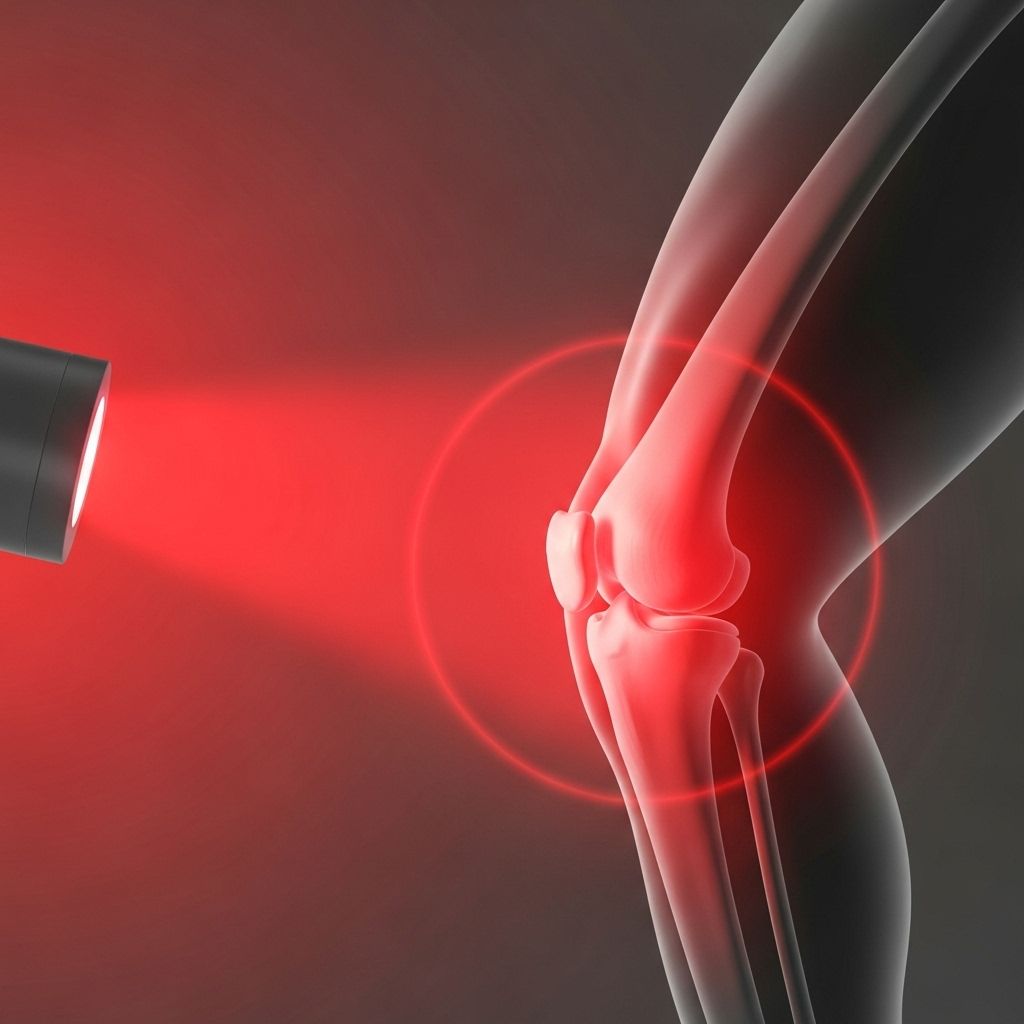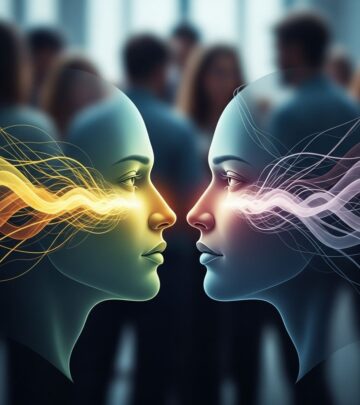Red Light Therapy: A Natural Remedy for Joint Pain and Inflammation
Discover how red light therapy alleviates joint pain and inflammation, promoting improved mobility and natural healing.

Chronic joint pain and persistent inflammation impact millions, often disrupting daily life and physical freedom. While traditional treatments rely on medication and invasive procedures, red light therapy has emerged as a natural, non-invasive option that provides relief and supports healing for those experiencing discomfort from joint issues, including arthritis. This article explores the mechanisms, evidence, and practicalities of red light therapy for joint health, focusing on its potential as an accessible and drug-free remedy.
Understanding Red Light Therapy
Red light therapy, also known as low-level laser therapy (LLLT) or photobiomodulation (PBM), employs specific wavelengths of red and near-infrared light to stimulate cellular processes. These wavelengths penetrate the skin and underlying tissue, interacting with cells in ways that enhance energy production and trigger biological responses linked to pain relief, inflammation reduction, and tissue repair.
- Light Wavelengths: Red light typically uses wavelengths from 600 to 700 nanometers; near-infrared ranges from 750 to 1100 nanometers.
- Application: Treatment can be administered using LED devices, laser panels, or flexible pads that are placed over the affected joints or muscles.
How Does Red Light Therapy Work?
The therapeutic effects of red light therapy are due to its impact on cellular function, particularly in the mitochondria—the energy centers of our cells. Here’s a breakdown of its mechanisms:
- Enhanced ATP Production: Red and near-infrared light increases production of adenosine triphosphate (ATP), fueling cell repair and regeneration.
- Anti-Inflammatory Action: The therapy downregulates pro-inflammatory cytokines and boosts anti-inflammatory signals, directly reducing swelling and pain.
- Improved Blood Flow: Exposure to therapeutic wavelengths promotes vasodilation, improving circulation, nutrient delivery, and waste removal in affected tissues.
- Cellular Healing: Accelerates healing of connective tissue, cartilage, tendons, and even bone through stimulation of fibroblasts and chondrocytes.
Why Is Joint Pain So Common?
Joint pain can result from many causes, including age-related wear and tear, injury, or autoimmune diseases such as arthritis. The most common contributors include:
- Arthritis (Osteoarthritis and Rheumatoid Arthritis): Chronic inflammation and cartilage breakdown in the joints.
- Overuse Injuries: Repetitive movements or strain causing stress to joint tissues.
- Post-Traumatic Damage: Effects of accidents or acute injuries.
The pain is often exacerbated by swelling, loss of cartilage, or reduced mobility. Managing these symptoms without long-term dependency on drugs is a key concern for many sufferers.
Red Light Therapy and Arthritis: Scientific Evidence
The application of red light therapy in arthritis management is supported by a growing body of research. Studies and clinical observations have reported the following benefits:
- Drug-Free Pain Relief: Many users report fast-acting relief within minutes of therapy, with effects that may last longer than typical pharmaceutical painkillers.
- Inflammation Reduction: Red light therapy downregulates inflammatory cytokines, mitigating the chronic inflammation that underlies rheumatoid and osteoarthritis.
- Tissue Repair: Promotes repair in cartilage, tendons, and other connective tissues, which is vital for combating degenerative joint changes.
- Improved Joint Function: Enhanced range of motion and flexibility, attributed to lower swelling, less stiffness, and faster tissue regeneration.
- Reduced Swelling: Clinical trials demonstrate that the light’s anti-inflammatory effects translate to tangible reductions in joint swelling and associated discomfort.
| Benefit | Description |
|---|---|
| Pain Relief | Reduces pain intensity without medication. |
| Decreased Inflammation | Suppresses inflammatory processes and relieves swelling. |
| Faster Recovery | Speeds up tissue repair and healing after injury. |
| Improved Mobility | Enhances range of motion and flexibility in affected joints. |
| Cartilage Support | Stimulates chondrocyte activity and cartilage preservation. |
How Red Light Therapy Is Applied to Joints
Red light therapy devices are available in various forms—from large panels to flexible pads and handheld wands. Key factors in effective use include:
- Targeted Placement: Devices are positioned directly over the painful joint or affected area for optimal light penetration.
- Session Length: Typical treatment sessions last from 10 to 20 minutes, depending on device power and treatment area.
- Frequency: Optimal results are generally observed with regular sessions (2–5 times per week).
- Consistency: Like most natural therapies, red light therapy is most effective with consistent, cumulative use.
Many devices are cleared by regulatory bodies for use in relieving joint aches and stiffness, especially for those with arthritis or recurring inflammatory joint conditions.
Scientific Mechanism: What Happens in the Cells?
The science behind red light therapy centers on mitochondrial stimulation and downstream effects on cell signaling:
- Photon Absorption: Light energy is absorbed by cytochrome c oxidase in the mitochondria, boosting cellular respiration.
- ATP Synthesis: Increased ATP supports enhanced cell repair, growth, and metabolic activity.
- Gene Expression: Modulates genes involved in inflammation, healing, and immune response.
- Neurochemical Balance: Stimulates production of endorphins and other natural painkillers.
This cascade of effects helps the body resolve inflammation, repair tissue damage, and reduce pain in a targeted, non-destructive manner.
Red Light Therapy for Arthritis Sufferers
Arthritis, encompassing both osteoarthritis (OA) and rheumatoid arthritis (RA), is among the most widely studied conditions for red light therapy. Multiple studies report the following specific advantages:
- Non-Invasive: Red light therapy doesn’t require incisions, injections, or medication, making it suitable for those seeking alternatives to drugs or surgeries.
- Minimal Side Effects: When used correctly, side effects are rare and mild, such as slight warmth or temporary redness.
- Ongoing Relief: With regular sessions, participants often notice sustained reductions in pain and flare frequencies over time.
Who Can Benefit from Red Light Therapy?
- Individuals with chronic joint pain or stiffness, whether due to arthritis, repetitive strain, or sports injuries.
- People experiencing daily inflammation impacting mobility or sleep quality.
- Those seeking non-pharmacological pain solutions, including older adults, athletes, and people with sensitivity to medications.
- Individuals recovering from joint surgery or seeking to enhance tissue healing.
What Does a Typical Red Light Therapy Session Look Like?
While treatment protocols may vary by device, these elements are common to most sessions:
- Preparation: The skin should be clean and free of lotions or sunscreens.
- Positioning: The affected joint is exposed and the device placed close to, but not touching, the skin.
- Exposure: Sessions range from 5–20 minutes per area; dosage is determined by device output (measured in mW/cm2).
- Post-Session: Most users feel mild warmth or tingling but can resume daily activities immediately.
Comparing Red Light Therapy to Other Pain Relief Methods
Individuals seeking relief from joint pain and inflammation often weigh several conventional and alternative treatments. Here’s how red light therapy compares:
| Method | Pros | Cons |
|---|---|---|
| Red Light Therapy | Non-invasive, drug-free, minimal side effects, supports tissue repair | Requires multiple sessions, upfront device cost |
| NSAID Pain Medication | Quick relief, widely available | Risk of gastrointestinal, kidney, or cardiovascular side effects |
| Steroid Injections | Potent anti-inflammatory effect | Invasive, potential tissue damage, not for frequent use |
| Physical Therapy | Strengthens joint and surrounding muscles, improves function | Requires regular appointments, slower pain relief |
Frequently Asked Questions (FAQs)
What conditions are best treated with red light therapy?
Red light therapy is ideal for chronic joint pain, arthritis (osteoarthritis and rheumatoid arthritis), muscle strains, and tendon injuries. It’s also used for soft tissue healing and inflammation reduction after exercise or surgery.
How quickly does red light therapy work for joint pain?
Many people experience reduced pain after just a few sessions. The duration and degree of relief depend on the severity of the condition and consistency of therapy. Regular, cumulative use provides lasting benefits.
Is red light therapy safe?
Yes, when used as directed, red light therapy is considered very safe for most people. Side effects are rare and typically limited to mild warmth or redness. Devices should be used according to manufacturer guidelines.
Can red light therapy be combined with other treatments?
Absolutely. Many people use red light therapy alongside physical therapy, exercise, and conventional medications for synergistic effects and faster recovery.
How do I choose the right device?
Prioritize devices with proven wavelengths (about 630–660 nm for red, 810–850 nm for near-infrared) and clinical certifications. Consider pad or panel types for large joints and ensure the manufacturer provides clear usage guidelines.
Final Thoughts: A Natural Path to Joint Health
Red light therapy offers a compelling option for anyone seeking natural pain relief and inflammation support, with evidence-based benefits for joint health. Its unique combination of non-invasiveness, regenerative potential, and an excellent safety profile makes it suitable for ongoing management of arthritis and other joint conditions. As research accumulates, red light therapy continues to redefine what’s possible in the realm of non-drug pain management—helping people move with comfort, confidence, and vitality.
References
- https://healthlightllc.com/2023/03/13/red-light-therapy-for-arthritis/
- https://gaithappens.com/exploring-red-light-therapy-for-arthritis/
- https://www.southloopchiropractor.com/benefits-of-red-light-therapy-for-knee-pain-podcast/
- https://my.clevelandclinic.org/health/articles/22114-red-light-therapy
- https://www.mainlinehealth.org/blog/what-is-red-light-therapy
- https://pmc.ncbi.nlm.nih.gov/articles/PMC10531845/
- https://www.uclahealth.org/news/article/5-health-benefits-red-light-therapy
- https://www.uhhospitals.org/blog/articles/2025/06/what-you-should-know-about-red-light-therapy
- https://pmc.ncbi.nlm.nih.gov/articles/PMC5523874/
Read full bio of Sneha Tete











